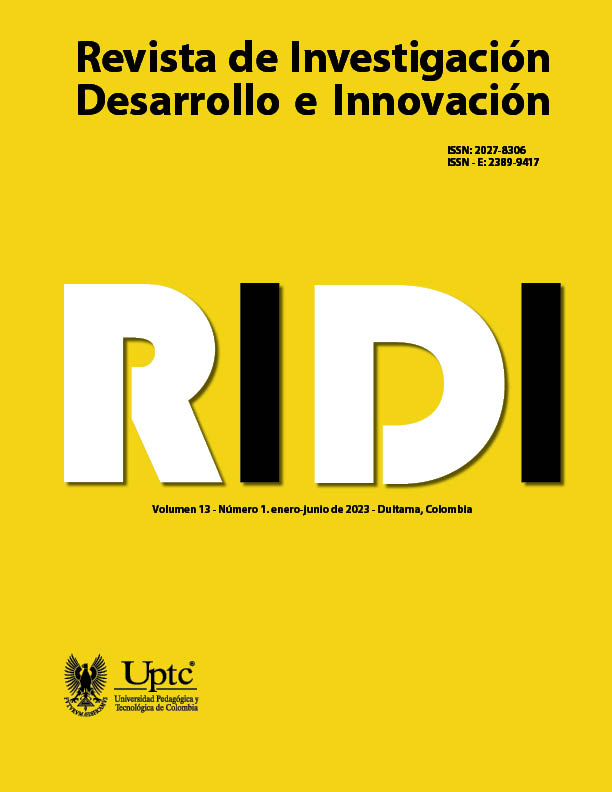Analysis of balanced, unbalanced, sinusoidal and nonsinusoidal three-phase systems through a Python developed tool

Abstract
This paper proposes a Python tool for the analysis of balanced, unbalanced, sinusoidal and nonsinusoidal three-phase systems based on the IEEE Std. 1459. The proposed tool was developed to be used by electrical engineers and professionals of related careers providing a free access for electrical power calculations that allows validation and power analysis in power systems. The proposed tool is available for use on a GitHub link and only requires voltage and current signals as inputs, making it possible to dispense expensive commercial network analyzers. The tool is made of two interfaces, one for making power calculations of sinusoidal three-phase systems and the other one for making calculations of nonsinusoidal three-phase systems; both interfaces can be accessed through a main menu. The proposed tool facilitates decision-making in electrical system issues, which helps improving the efficiency and power quality of electrical systems.
Keywords
power quality;, IEEE Std. 1459;, Python;, nonsinusoidal unbalanced three-phase systems
Author Biography
León Felipe Serna-Montoya
Ingeniero Electricista, Magíster en Ingeniería
Juan Pablo Suárez-Ramírez
Estudiante de Ingeniería Energética
Manuel Ramírez-Gil
Estudiante de Ingeniería Energética
Nicolás Muñoz-Galeano
Ingeniero Electricista, Doctor en Ingeniería
Juan Bernardo Cano-Quintero
Ingeniero Electrónico, Doctor en Ingeniería
Jesús María López-Lezama
Ingeniero Electricista, Doctor en Ingeniería
References
- Alexander, C. K., & Sadiku, M. N. O. (2012). Fundamentals of electric circuits (5th ed.). McGraw Hill Higher Education.
- Artale, G., Caravello, G., Cataliotti, A., Cosentino, V., Cara, D. Di, Guaiana, S., Panzavecchia, N., & Tinè, G. (2021). Measurement of Simplified Single- and Three-Phase Parameters for Harmonic Emission Assessment Based on IEEE 1459-2010. IEEE Transactions on Instrumentation and Measurement, 70, 1–10. https://doi.org/10.1109/TIM.2020.3037949 DOI: https://doi.org/10.1109/TIM.2020.3037949
- Asadi, F., & Eguchi, K. (2020). Fundamental concepts of power electronic circuits, 421–526. https://doi.org/10.1016/B978-0-12-817364-0.00008-4 DOI: https://doi.org/10.1016/B978-0-12-817364-0.00008-4
- Beig, A. R. (2016). 10 - Three-phase AC supply. In M. H. Rashid (Ed.), Electric Renewable Energy Systems, 183–208. Academic Press. https://doi.org/https://doi.org/10.1016/B978-0-12-804448-3.00010-4 DOI: https://doi.org/10.1016/B978-0-12-804448-3.00010-4
- Blasco, P. A., Montoya-Mira, R., Diez, J. M., & Montoya, R. (2020). An Alternate Representation of the Vector of Apparent Power and Unbalanced Power in Three-Phase Electrical Systems. Applied Sciences, 10 (11). https://doi.org/10.3390/app10113756 DOI: https://doi.org/10.3390/app10113756
- Blasco, P. A., Montoya-Mira, R., Diez, J. M., Montoya, R., & Reig, M. J. (2018). Formulation of the Phasors of Apparent Harmonic Power: Application to Non-Sinusoidal Three-Phase Power Systems. Energies, 11 (7). https://doi.org/10.3390/en11071888 DOI: https://doi.org/10.3390/en11071888
- Blasco, P. A., Montoya-Mira, R., Diez, J. M., Montoya, R., & Reig, M. J. (2020). Compensation of Reactive Power and Unbalanced Power in Three-Phase Three-Wire Systems Connected to an Infinite Power Network. Applied Sciences, 10 (1). https://doi.org/10.3390/app10010113 DOI: https://doi.org/10.3390/app10010113
- Emanuel, A. E. (1998). The Buchholz-Goodhue apparent power definition: the practical approach for nonsinusoidal and unbalanced systems. IEEE Transactions on Power Delivery, 13 (2), 344–350. https://doi.org/10.1109/61.660900 DOI: https://doi.org/10.1109/61.660900
- Emanuel, A. E. (1999). Apparent power definitions for three-phase systems. IEEE Transactions on Power Delivery, 14 (3), 767–772. https://doi.org/10.1109/61.772313 DOI: https://doi.org/10.1109/61.772313
- Emanuel, A. E. (2004). Summary of IEEE standard 1459: definitions for the measurement of electric power quantities under sinusoidal, nonsinusoidal, balanced, or unbalanced conditions. IEEE Transactions on Industry Applications, 40 (3), 869–876. https://doi.org/10.1109/TIA.2004.827452 DOI: https://doi.org/10.1109/TIA.2004.827452
- Fortescue, C. L. (1918). Method of symmetrical co-ordinates applied to the solution of polyphase networks. Transactions of the American Institute of Electrical Engineers, 37, 1027–1140. https://doi.org/10.1109/T-AIEE.1918.4765570 DOI: https://doi.org/10.1109/T-AIEE.1918.4765570
- Frank, B. (1992). Die drehstrom-scheinleistung bei ungleichmassiger belastung der drei zweige (Vol. 2). Licht und Kraft.
- Graña-López, M. A., García-Diez, A., Filgueira-Vizoso, A., Chouza-Gestoso, J., & Masdías-Bonome, A. (2019). Study of the Sustainability of Electrical Power Systems: Analysis of the Causes that Generate Reactive Power. Sustainability, 11 (24). https://doi.org/10.3390/su11247202 DOI: https://doi.org/10.3390/su11247202
- IEEE Std. 1459 (2010). IEEE Standard Definitions for the Measurement of Electric Power Quantities Under Sinusoidal, Nonsinusoidal, Balanced, or Unbalanced Conditions - Redline. (2010). IEEE Std 1459-2010, Revision of IEEE Std 1459-2000 - Redline, 1–52. https://doi.org/10.1109/IEEESTD.2010.5953405 DOI: https://doi.org/10.1109/IEEESTD.2010.5953405
- Jopri, M. H., Skamyin, A., Manap, M., Sutikno, T., Shariff, M. R. M., & Belsky, A. (2022). Identification of harmonic source location in power distribution network. International Journal of Power Electronics and Drive Systems (IJPEDS), 13 (2), 938. https://doi.org/10.11591/ijpeds.v13.i2.pp938-949 DOI: https://doi.org/10.11591/ijpeds.v13.i2.pp938-949
- Juansuarezr. (2021). Three-phase-power-calculator. GitHub. https://github.com/juansuarezr/Three-phase-power-calculator
- Kaur, A. P., & Singh, M. (2022). Design and development of a three-phase Net Meter for V2G enabled charging stations of electric vehicles. Sustainable Energy, Grids and Networks, 30, 100598. https://doi.org/https://doi.org/10.1016/j.segan.2021.100598 DOI: https://doi.org/10.1016/j.segan.2021.100598
- Li, J., Fang, H., Liao, C., & Du, J. (2020). A New Method for Determination of Harmonic Responsibility Based on Quality Engineering Theory. IEEE Access, 8, 119071–119081. https://doi.org/10.1109/ACCESS.2020.3001031 DOI: https://doi.org/10.1109/ACCESS.2020.3001031
- Macedo, J. R., Xavier, G. L., Gondin, I. N., Oliveira, L. T. S., & de Oliveira, R. F. B. (2020). An update on the performance of active energy meters under non-sinusoidal conditions. Electrical Engineering, 102 (3), 1785–1794. https://doi.org/10.1007/s00202-020-00991-y DOI: https://doi.org/10.1007/s00202-020-00991-y
- Qi, Y., Fang, J., & Tang, Y. (2020). Utilizing the Dead-Time Effect to Achieve Decentralized Reactive Power Sharing in Islanded AC Microgrids. IEEE Journal of Emerging and Selected Topics in Power Electronics, 8 (3), 2350–2361. https://doi.org/10.1109/JESTPE.2019.2904077 DOI: https://doi.org/10.1109/JESTPE.2019.2904077
- Tleis, N. (2019). Symmetrical components analysis of faulted three-phase networks containing voltage and current sources. In Power Systems Modelling and Fault Analysis. https://doi.org/10.1016/b978-0-12-815117-4.00002-3 DOI: https://doi.org/10.1016/B978-0-12-815117-4.00002-3